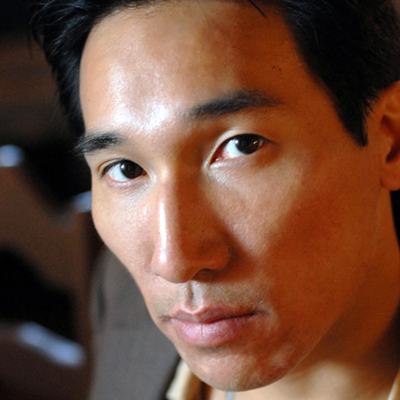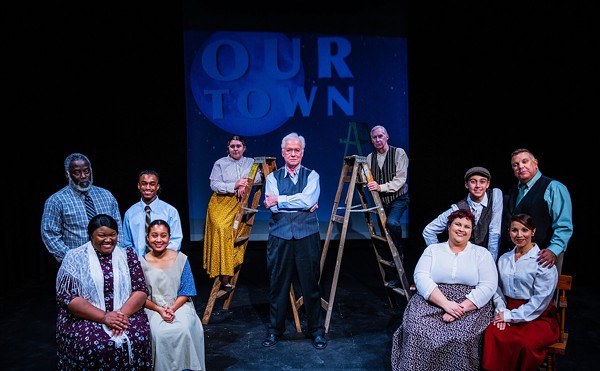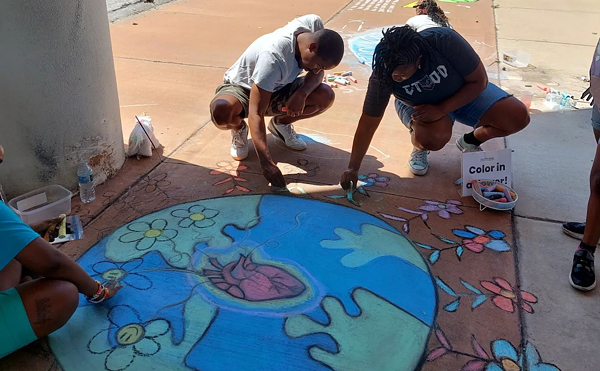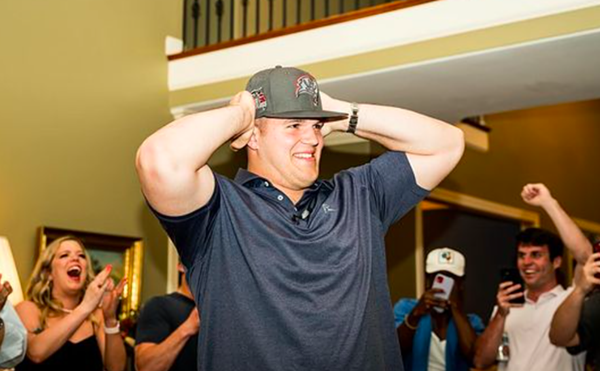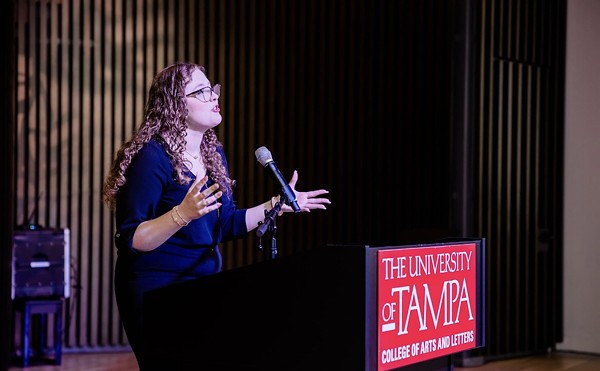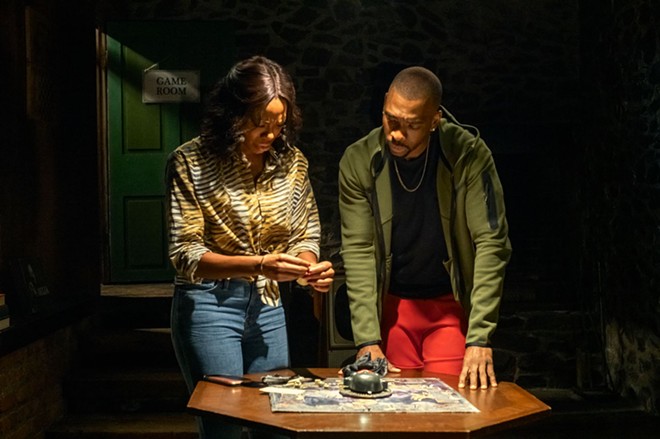
Have you heard about the new Lionsgate horror-comedy set during a weekend reunion when a group of Black college friends gather to celebrate Juneteenth?
The tagline is “We can’t all die first.”
Which is funny.
If you know horror.
“The Blackening,” however, is a horror movie that isn’t particularly scary; a slasher movie that isn’t particularly gory; and a comedy movie that isn’t particularly funny.
2 out of 5 stars
Now Playing
And yet the sneak-peak audience was laughing throughout.
What to do indeed.
I mean, call me the elephant in the room, but I was actually shocked at how liberally the script for “The Blackening” bandied about the ‘N’ word. Like a lot, y’all. A whole lot. Distractingly so.
And we haven’t even gotten to the actual title of the movie, which refers to a mysterious and wholly offensive game called The Blackening, which appears in the remote cabin in the woods that the friends rent for the weekend.
The playing board is constructed around an exaggerated, plastic golliwog head that speaks to the group in threats and pop culture queries. For those who don’t know, the word golliwog began in the 19th century in reference to a ragdoll character before becoming an unspeakably demeaning caricature of Black people that was widely accepted in society for far too long.
There’s so much to unpack just with that caricature, but “The Blackening” is not interested in a history lesson, much less any type of dialogue about how it makes the core cast feel when they discover the game.
And that’s where my main issue with this movie lies.
Horror, as a genre, is no stranger to intense, and often uncomfortable, social commentary. Hello, mindless, Capitalist zombies shuffling through a shopping mall in “Dawn of the Dead.”
And this would seem a perfect vehicle to dig deep into history to expose the awful and unbelievable in a way that still manages to entertain and educate.
When the occasional zinger does manage to land in “The Blackening,” you notice it because smart words matter.
Case in point, here’s the lone Black LGBTQ+ character explaining how his family views his sexual orientation: “Gayness is just whiteness wrapped up in a bunch of dicks.”
Not only is that hysterical, it’s the kind of razor-sharp insight that I didn’t expect to find in a movie directed by Tim Story, whose IMDb includes a lot of not-very-funny Kevin Hart vehicles.
Another recurring highlight plays up how two of the female friends can communicate solely with their eyes and facial expressions, which is genuinely funny and relatable, regardless of your gender.
Yet, oddly, “The Blackening” spends an inordinately small amount of time with its actual namesake, the game, which could have been mined for so much more meaty material.
The life-or-death questions themselves also aren’t exactly the kind of Jeopardy-level trivia that one might expect a serial killer to deploy. None of them really even stand out in hindsight. The only question that I remember clearly required the gang to use lyrics from a 22-year-old Nas song to complete a math equation.
Um, OK.
Instead, Story’s movie takes a kitchen-sink approach to its social commentary.
Yes, it clumsily touches on racial profiling, suggests that Black men can’t be faithful, and unnecessarily ties Black males to gun violence. There are three white characters in the entire movie, and the most significant is played by Diedrich Bader, which in and of itself is probably some inside joke, but there’s zero point for Bader to exist in “The Blackening” other than to reinforce stereotypes about race relations and law enforcement without adding new context or commentary. And don’t even get me started on the Blackface-style hood that the killer wears.
“The Blackening” also posits a fascinating question more than once, which is how much Blackness is acceptable and whom among this group can claim to be most Black.
And it’s in those moments when “The Blackening” actually connects, because it’s touching on something real, that you see a glimmer of what might have been.



